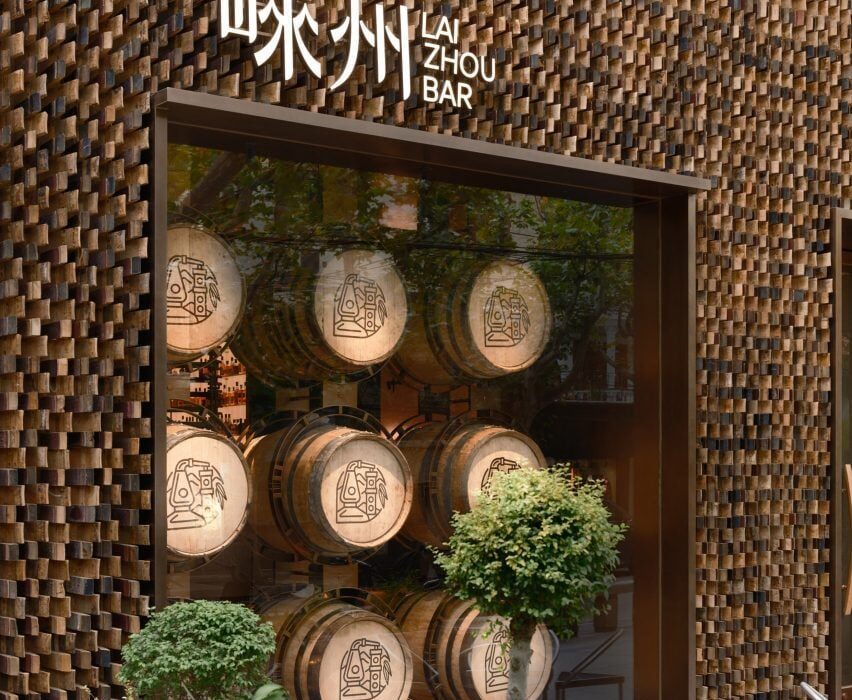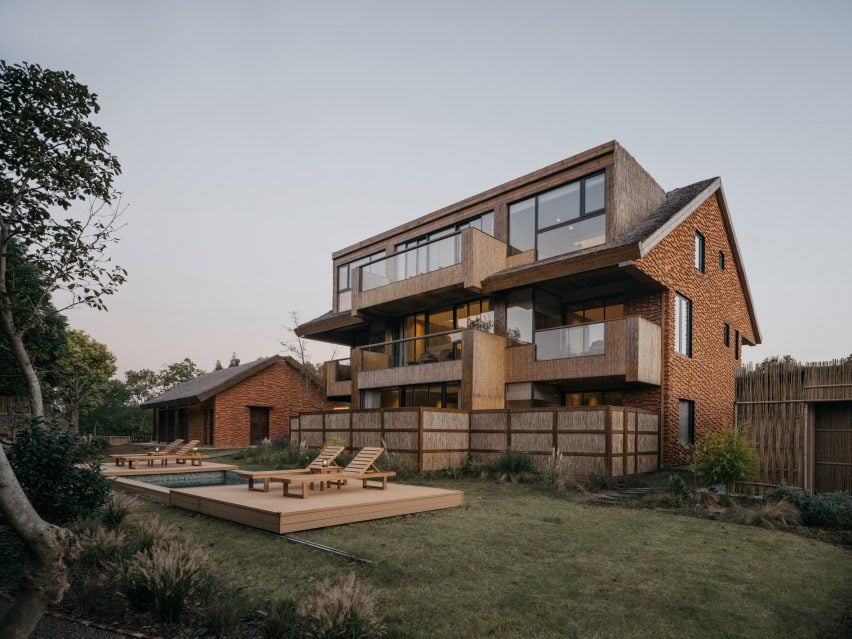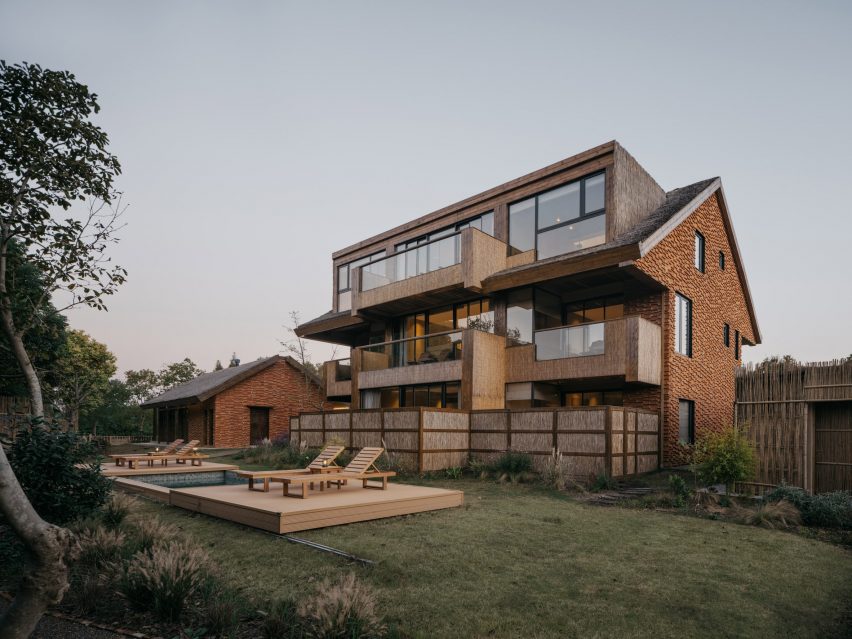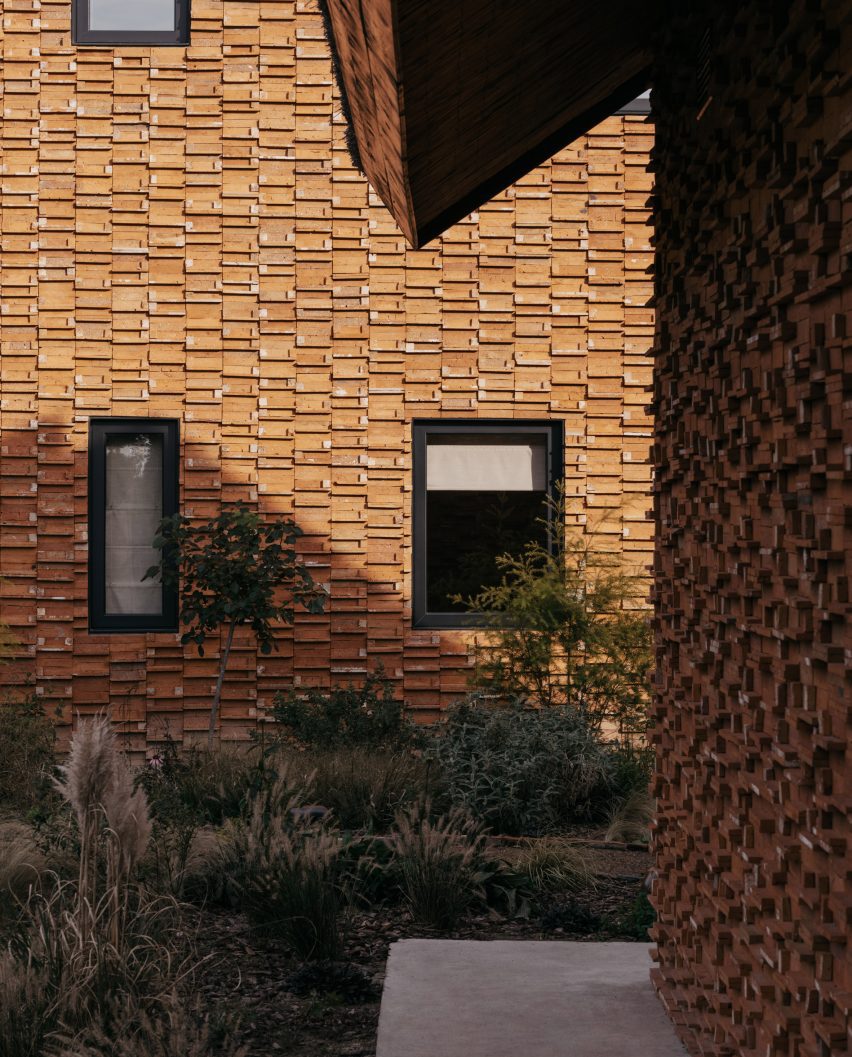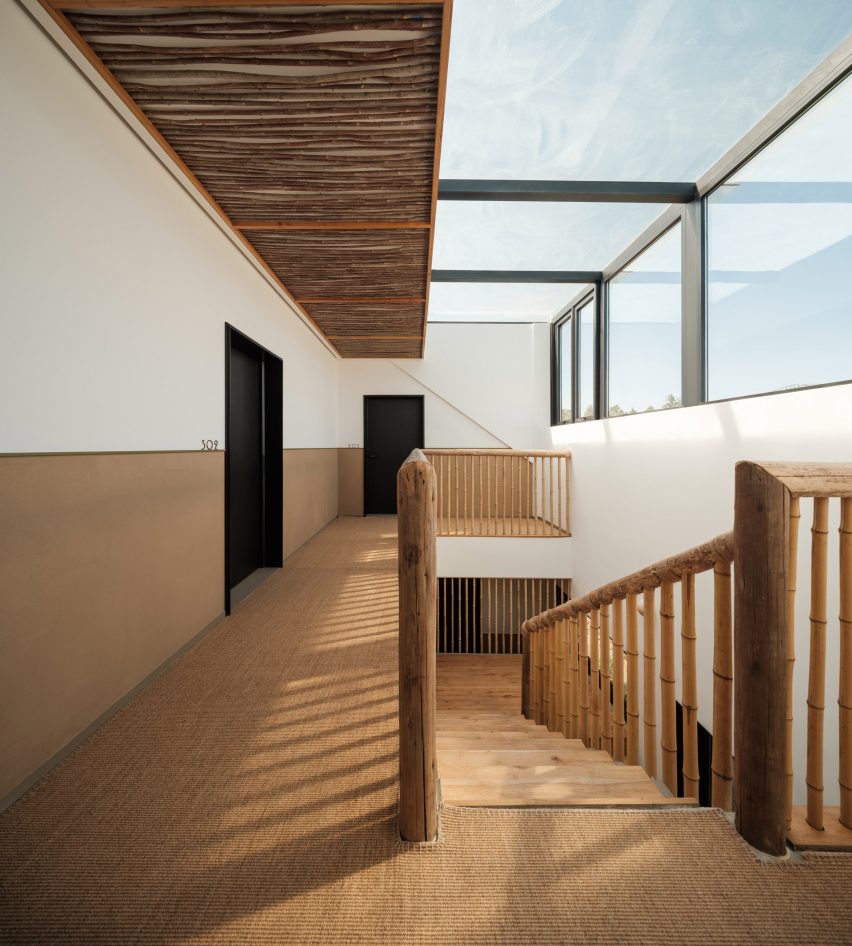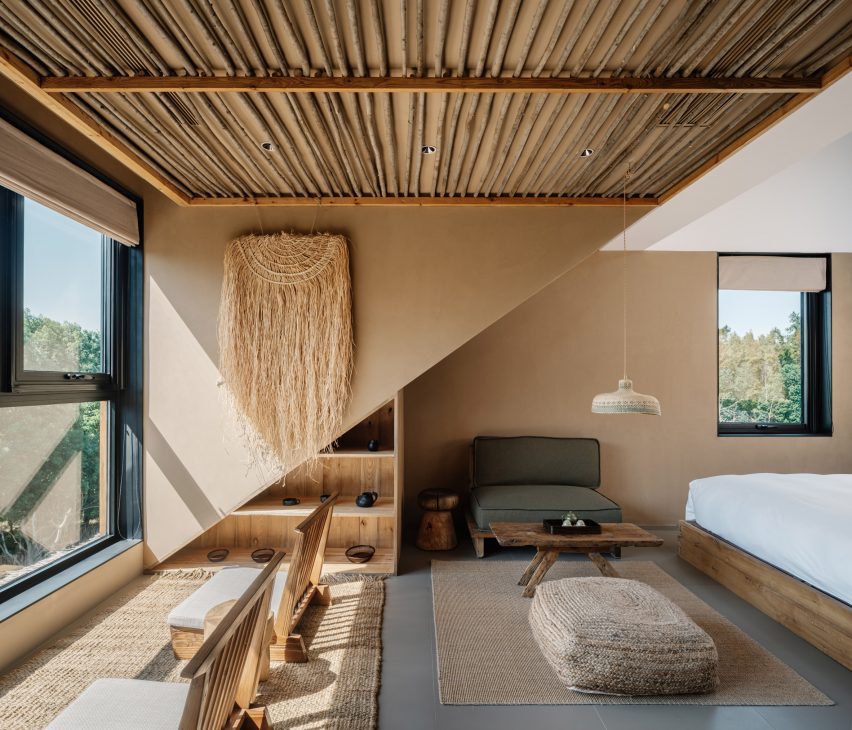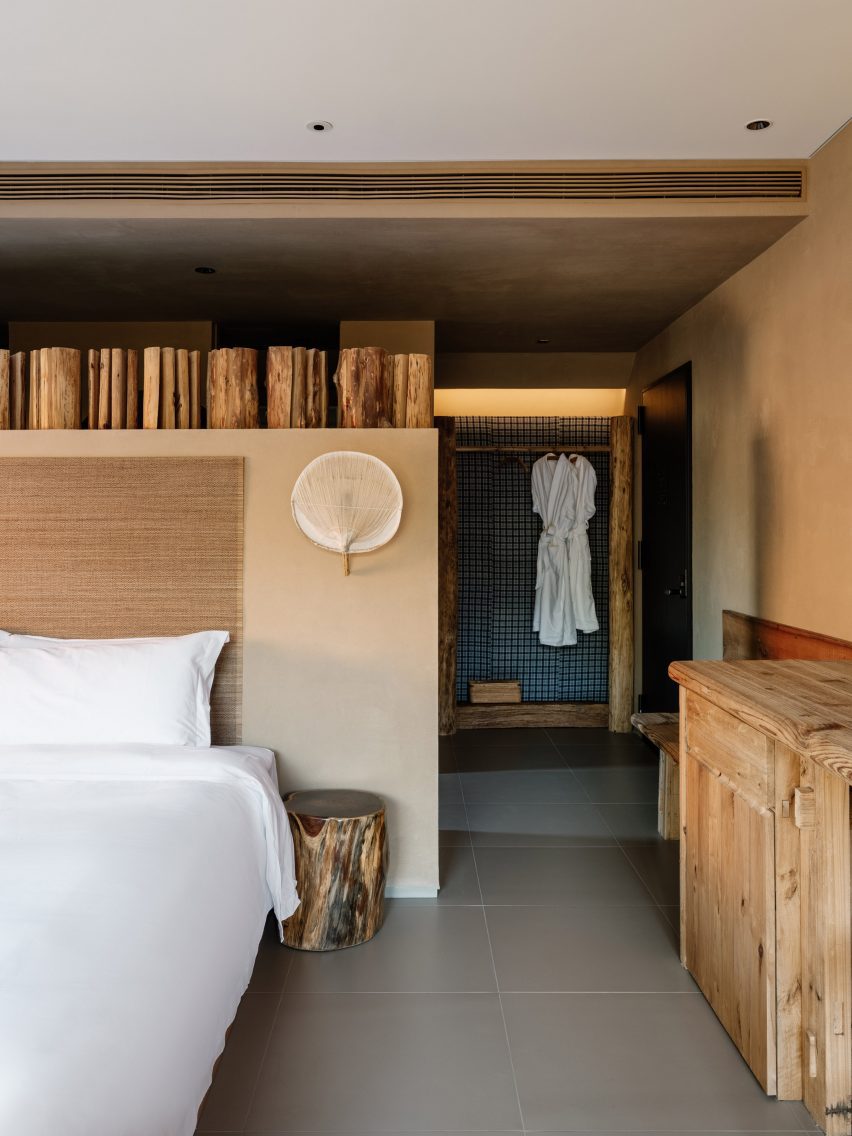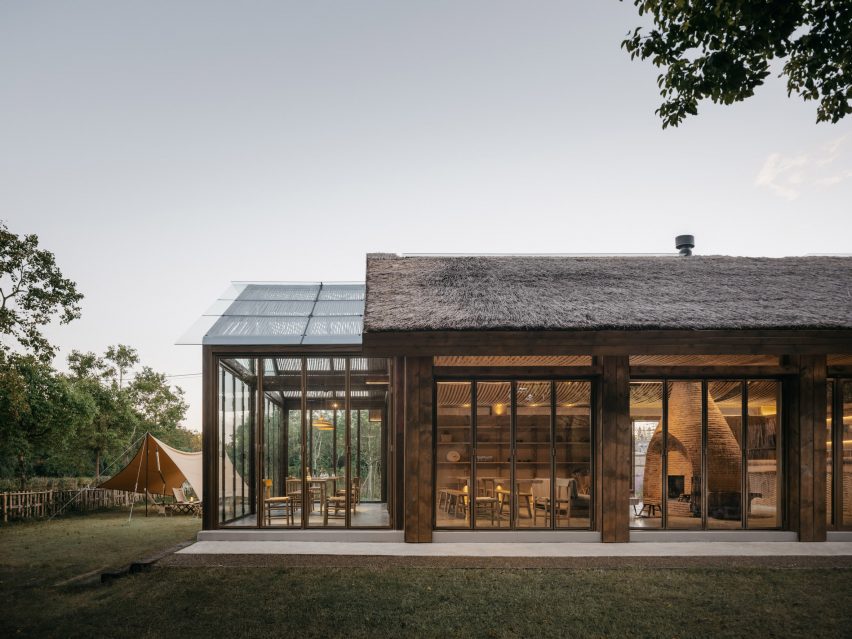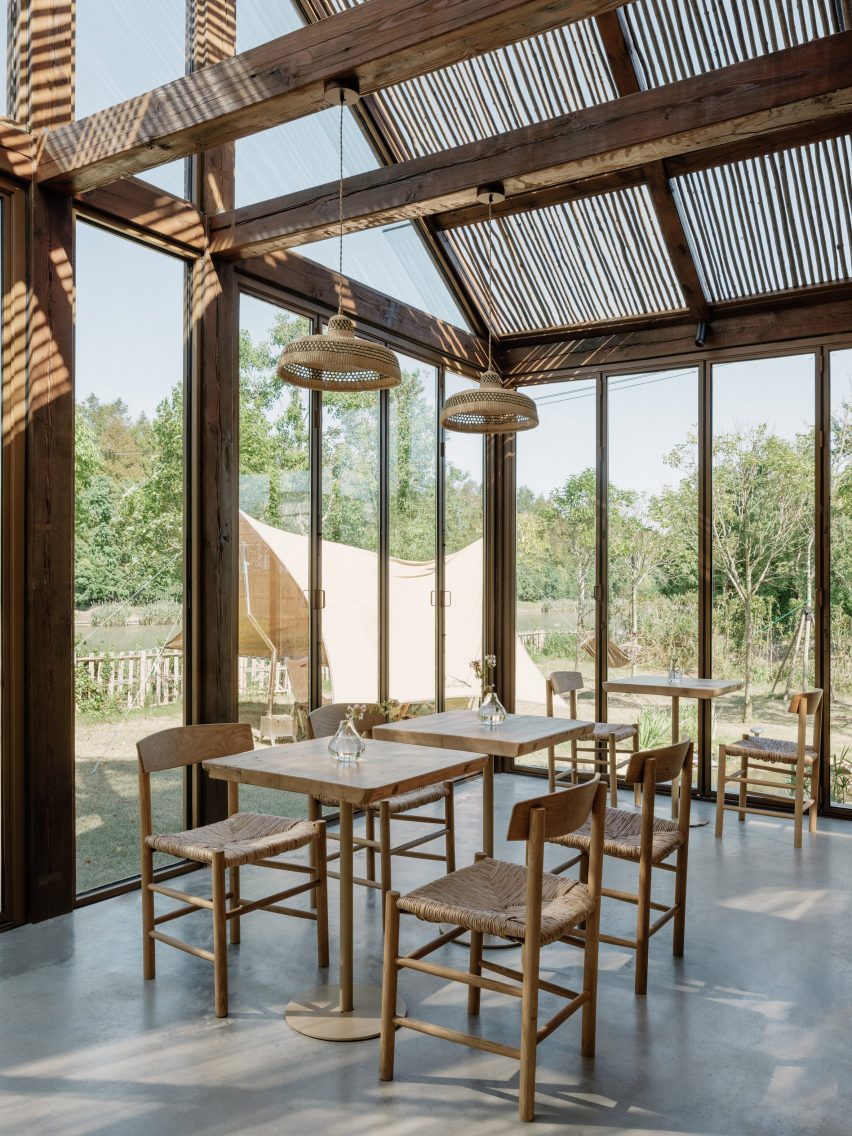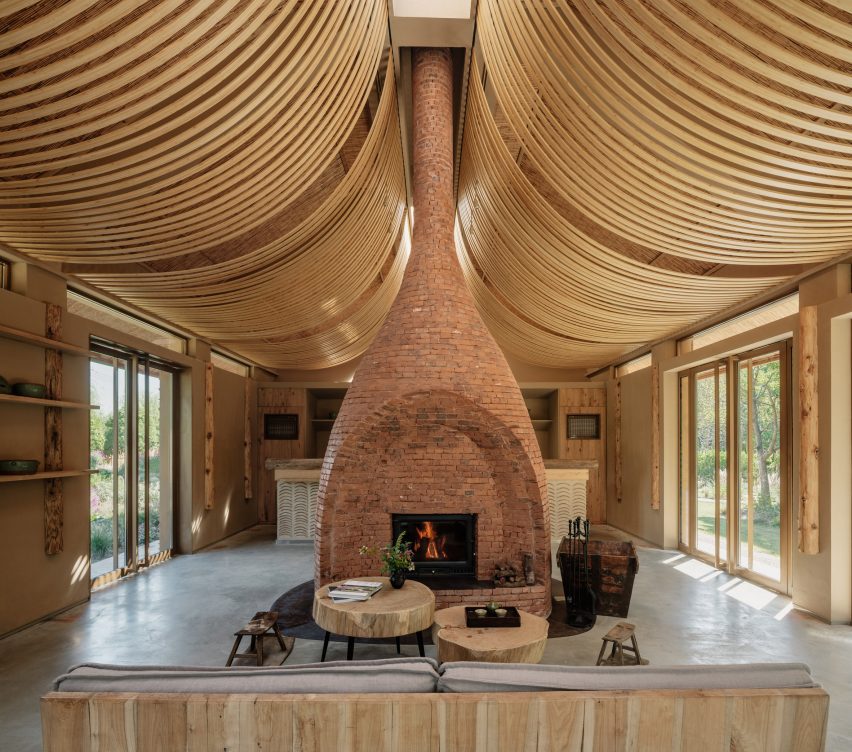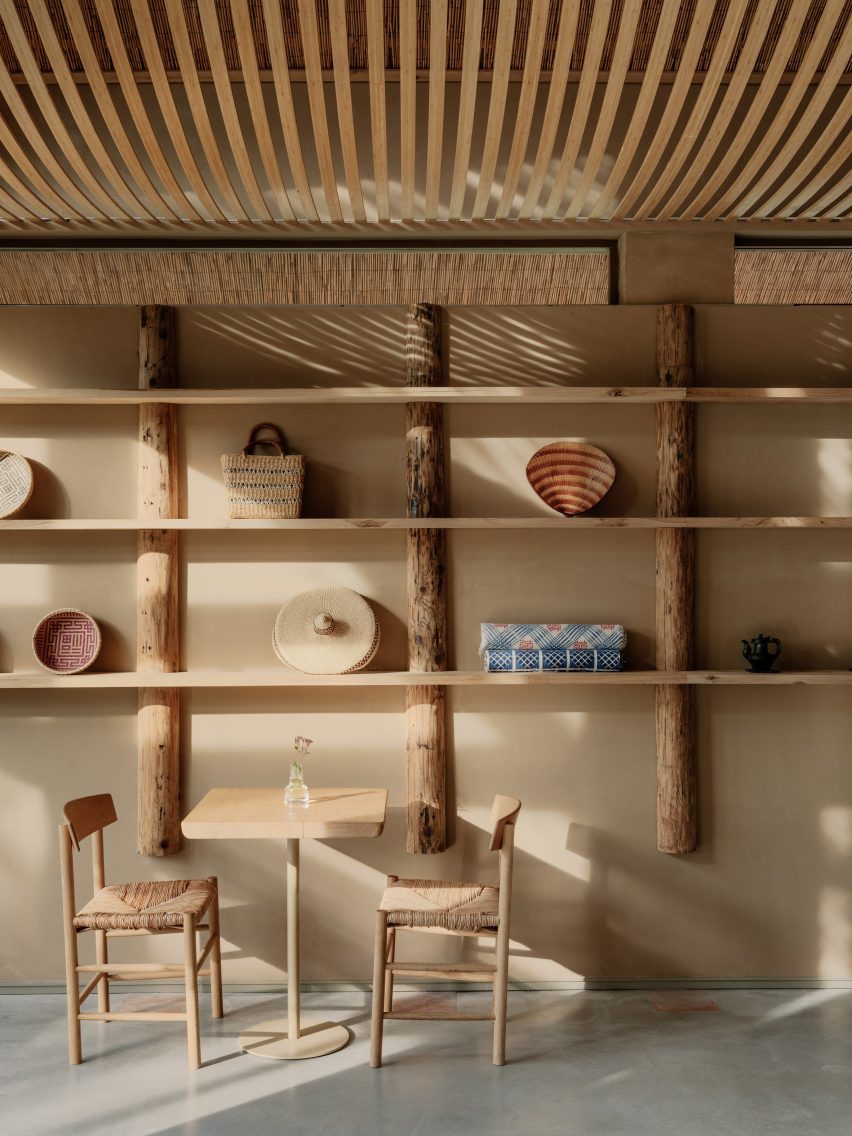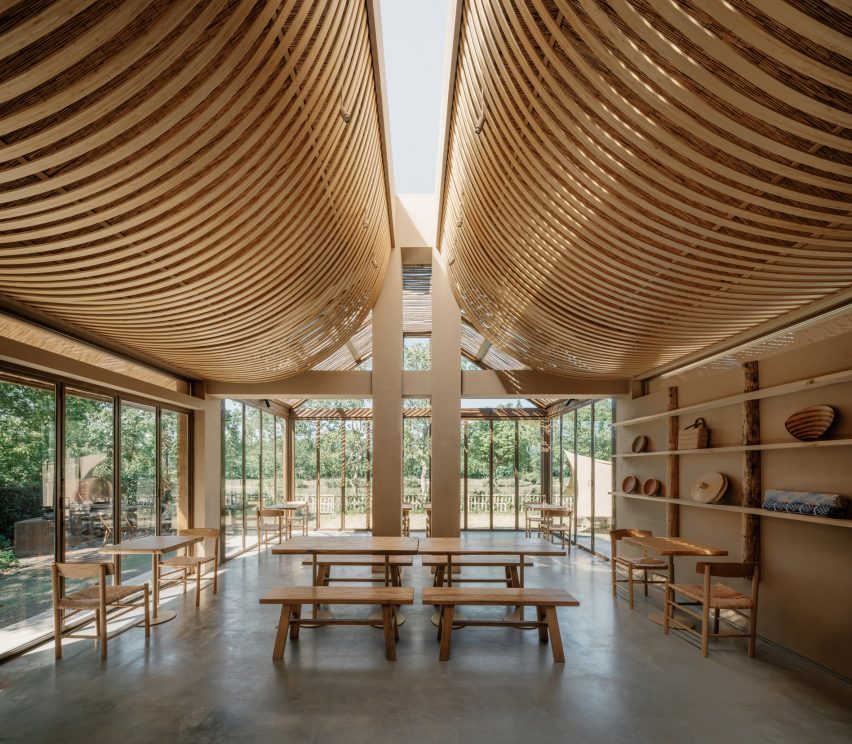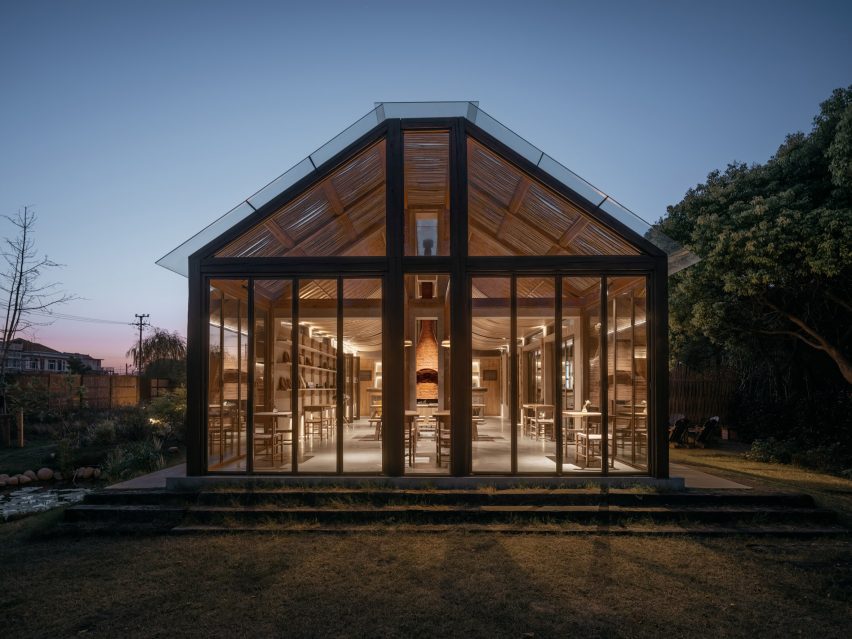RooMoo resuses old whiskey barrels inside Shanghai’s Laizhou Bar
Chinese interiors studio RooMoo has used nearly 6,000 pieces of oak from discarded distillery barrels to adorn this whiskey bar in Shanghai.
Laizhou Bar is located in the city’s buzzy Xuhui District and is an offshoot of Laizhou Distillery, a Chinese whiskey producer based out of Sichuan province.
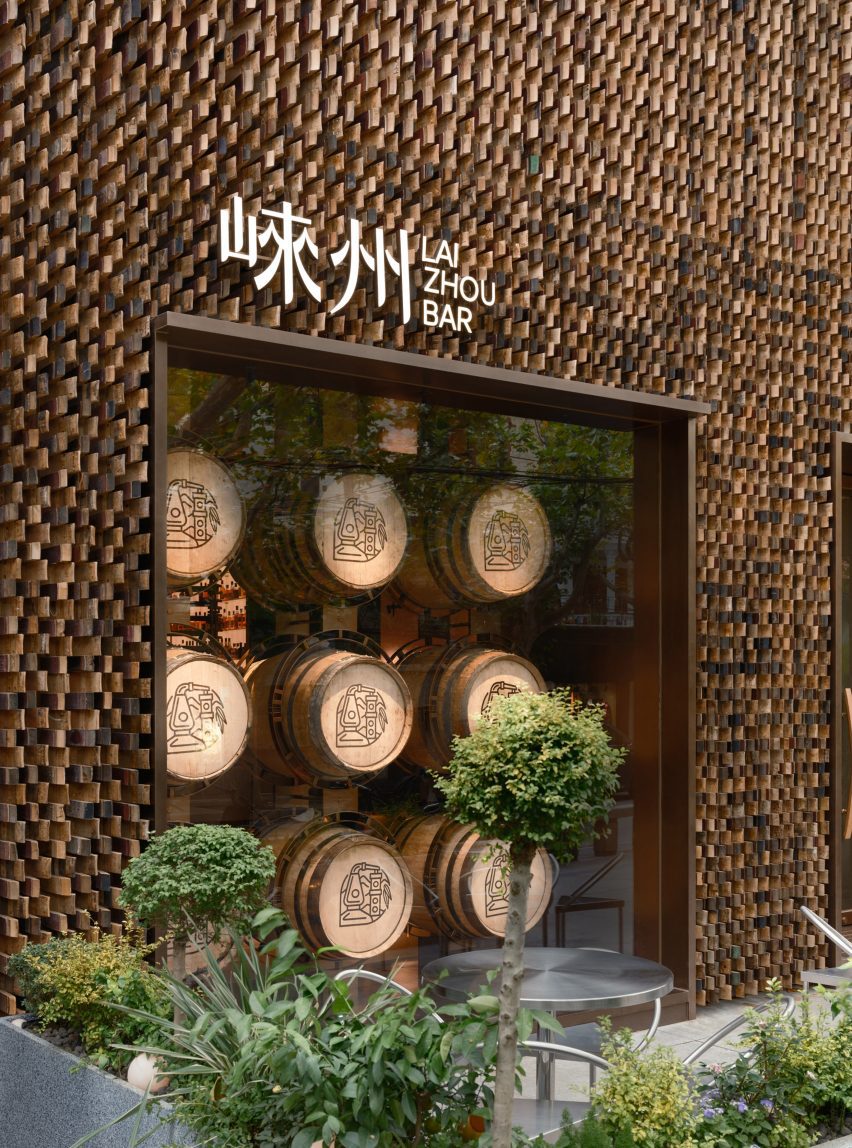
The distillery prides itself on reducing its environmental impact by using low-temperature saccharification machinery and collecting wastewater so it can be converted into biogas energy.
So Shanghai-based studio RooMoo placed a similar emphasis on sustainability when designing the bar, where almost 6,000 pieces of wood from the distillery’s discarded oak barrels were reused as decoration.
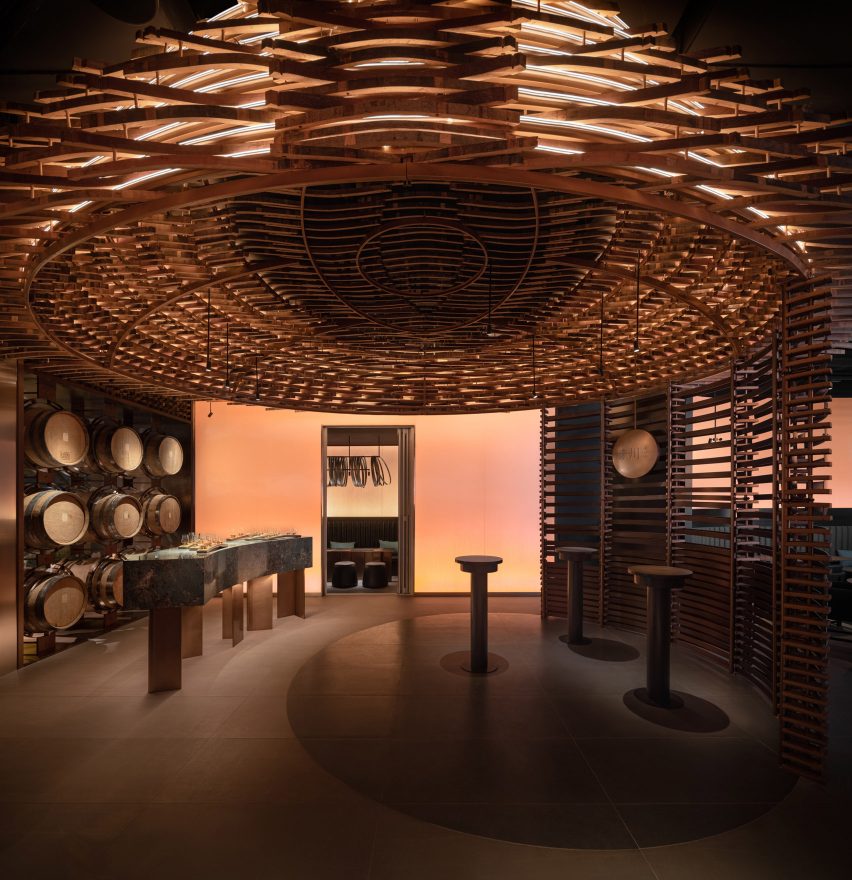
“The bar imports the materials used in the distillery’s production process, creating a symbiosis between the two spaces,” said the studio.
“Each dismantled barrel piece was different in terms of width, length and grain, so we classified them and applied them to different positions.”
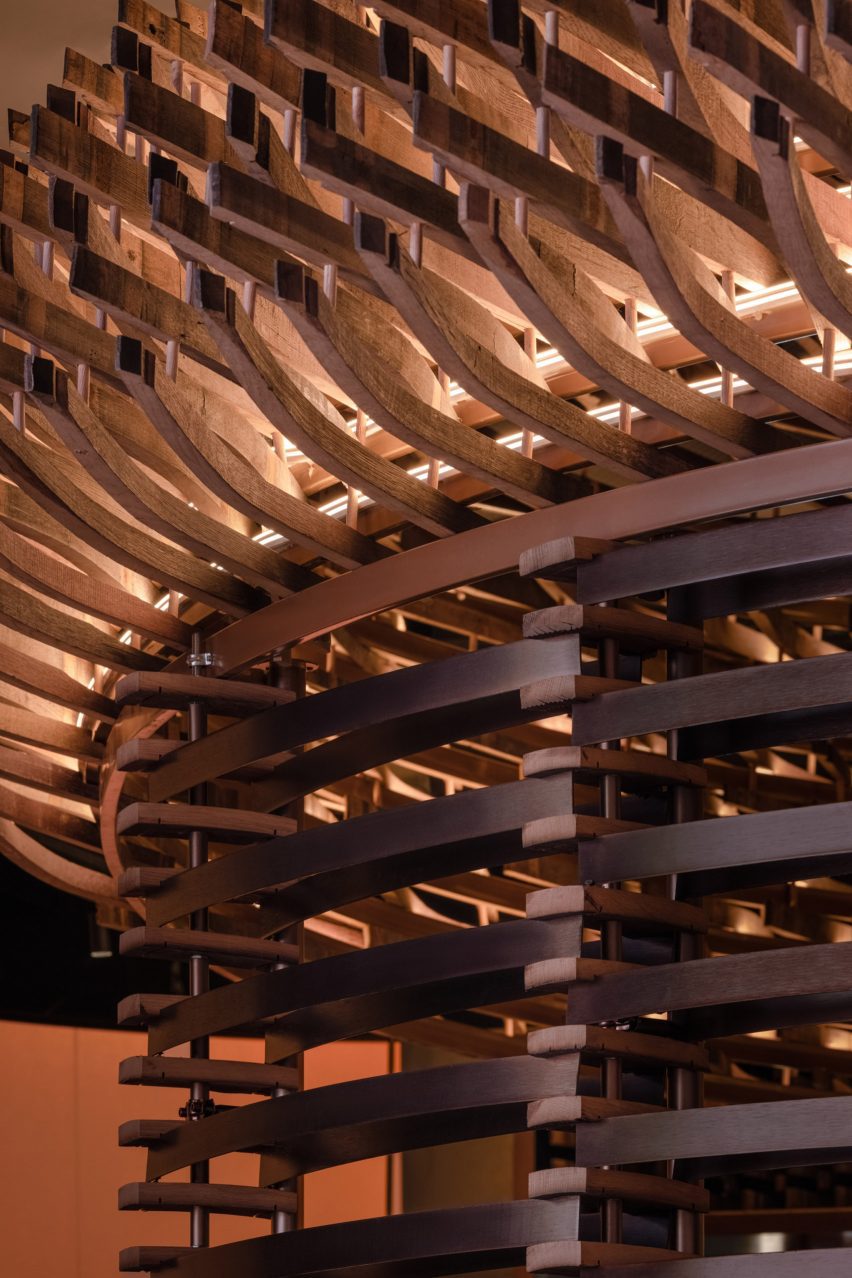
Barrel pieces are first seen on the bar’s facade, where they have been placed horizontally to create a lattice-like effect.
The facade is otherwise only punctuated by a wide-set door and an expansive window, where barrels printed with the distillery’s logo are displayed.
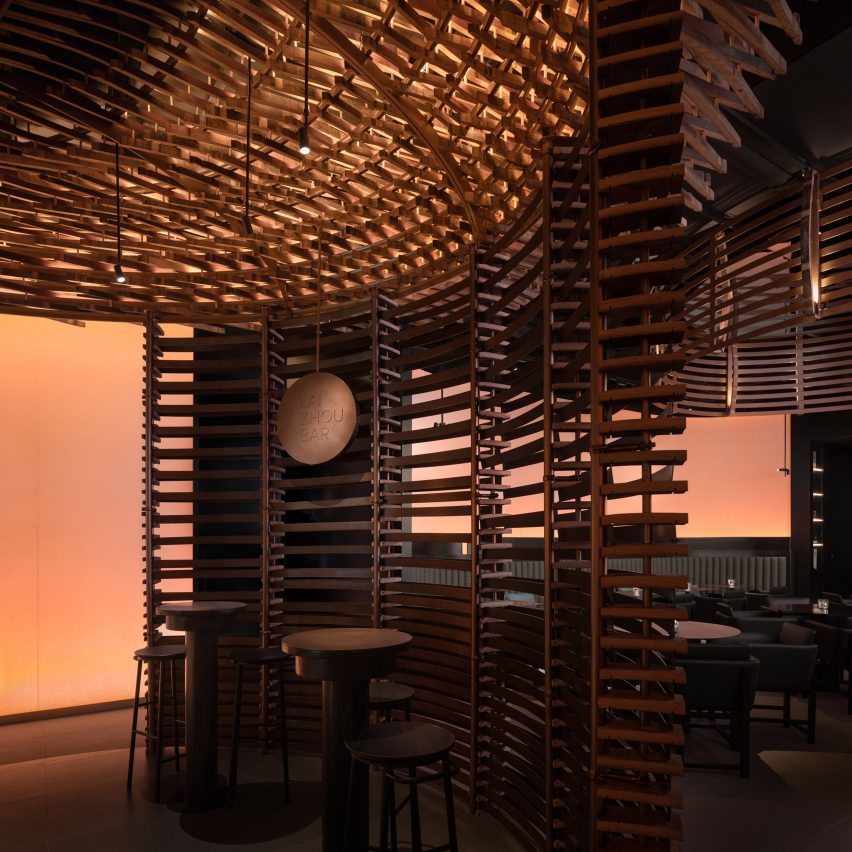
Once inside, guests step into a whiskey sampling area with a green marble tasting counter. Suspended directly above the space is a dramatic double-ringed sculpture crafted from barrel offcuts.
More wooden barrel pieces were used to construct a curving, slatted partition in front of the main bar.
A long seating banquette bends around the back of the room, accompanied by a series of black tables and leather chairs. There is also a huge light-up wall where liquor bottles are put on display.
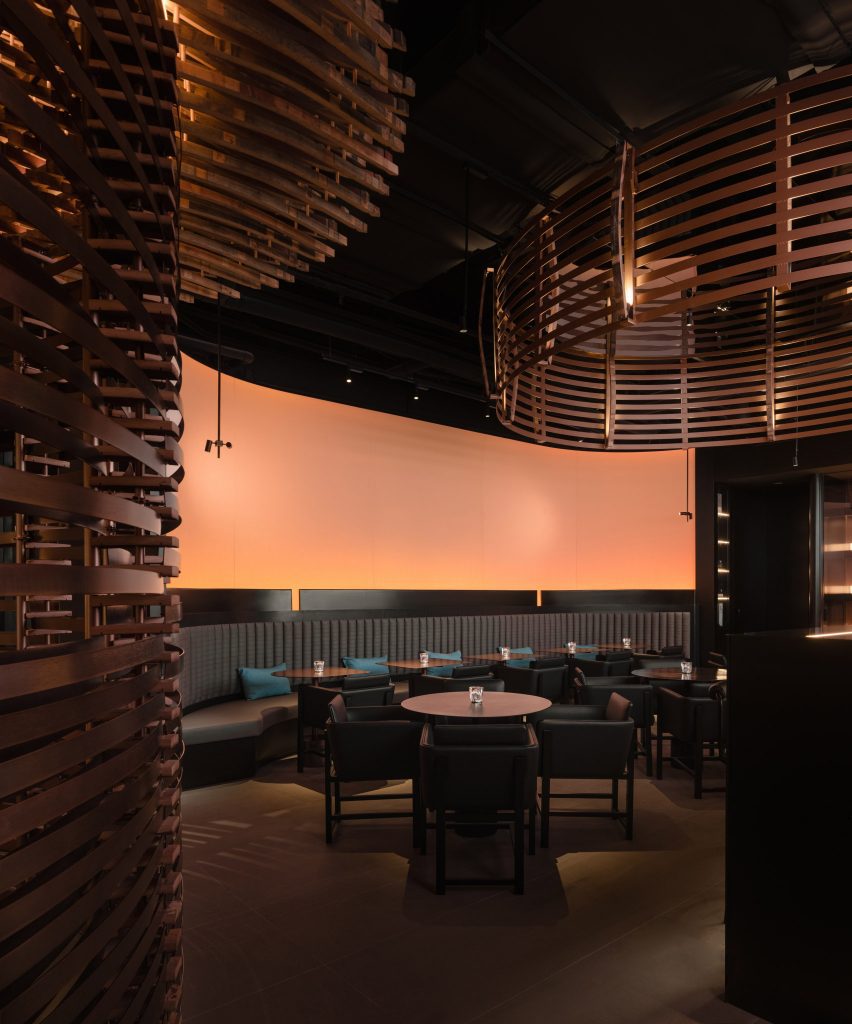
On the ceiling here are the beginnings of another ringed sculpture, which will be completed as soon as the distillery has used up more barrels for the studio to use.
“We made the ceiling structure beautiful enough to open the bar first,” explained the studio. “We are not hurrying to finish it, but following the production process and waiting for the wasted materials to be produced.”
Off to the side of the main bar is a more private VIP tasting room. At its centre hangs a bespoke light crafted from the circular metal bands, which once held together the distillery barrels.
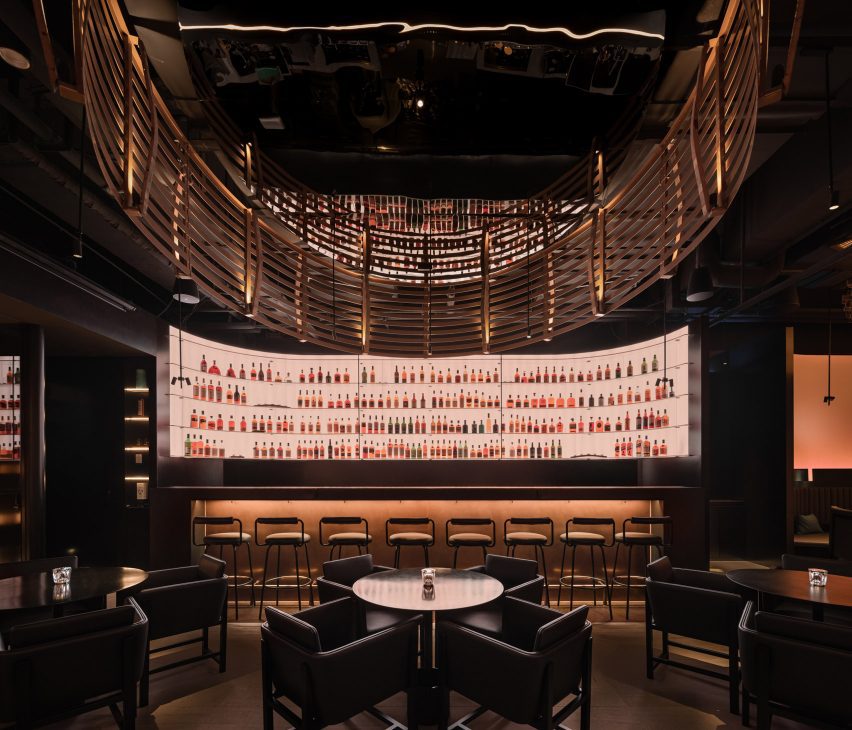
Lai Zhou Bar has made it to the shortlist in the sustainable interior category of the 2023 Dezeen Awards.
The project is up against Edit restaurant by Elly Ward and Joe Morris, which is clad with salvaged terracotta tiles, and the Big Beauty store by Nina + Co, which is decked out in biomaterials like mycelium.

